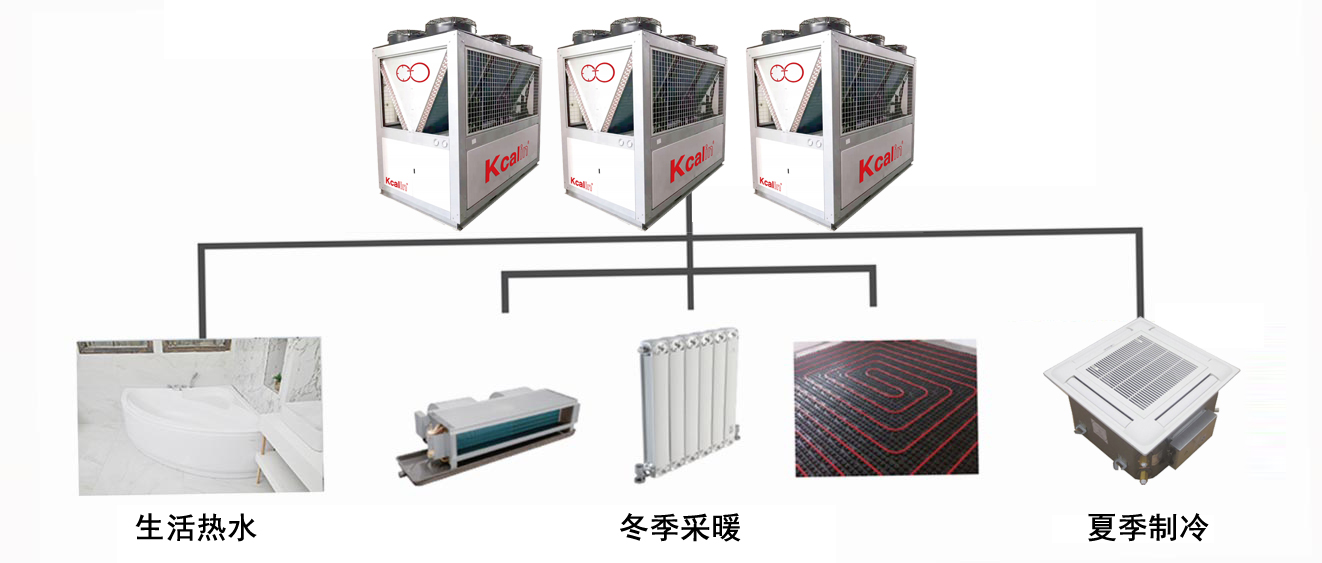In the cold winter, a warm home is what everyone yearns for. However, traditional heating methods not only waste energy, but may also bring high energy costs. Unlike this, air heating equipment, as an efficient and environmentally friendly heating option, can not only make your home warmer, but also reduce heating costs.
Let's briefly understand the working principle of air heating equipment. These devices utilize renewable energy sources in nature: air. The working process is as follows:
Heat absorption: Air heating equipment absorbs heat from the surrounding air through external air ducts, and can obtain usable heat even in low-temperature environments.
Compression heating: The absorbed heat is compressed, causing its temperature to rise.
Heat exchange: The heated heat is transferred to the heating system through a heat exchanger, which uses the heat to heat indoor air.
Heating: The heated air is sent indoors to provide a warm environment.
Loop cycle: After heat exchange, thermal energy enters the cycle again to absorb external heat.
This cycling process enables air heating equipment to efficiently provide indoor warmth even during cold winters.
The cost investment of air heating equipment mainly includes the following aspects:

Purchase cost: It is necessary to consider the purchase cost of air heating equipment. This includes the heat pump itself and installation costs. Buying an efficient air heating device may require some initial investment, but this cost usually pays off in subsequent energy savings.
Operating costs: Compared to traditional heating methods, air powered heating equipment typically has lower operating costs. This is because they utilize the heat energy in the environment without relying on expensive fuels. You only need to pay for electricity to drive the heat pump, which is usually more economical than other energy sources.
Maintenance cost: Air powered heating equipment typically has lower maintenance costs. They have no combustion components, so they are less susceptible to wear and corrosion. Regular inspection and maintenance can ensure the long-term stable operation of the equipment.
Subsidies and rewards: Some regions may provide subsidies and rewards related to energy efficiency to encourage residents to use air powered heating equipment. These subsidies and rewards can help reduce the overall cost of equipment.
Energy efficiency: Considering the high energy efficiency of air heating equipment, they are usually able to recover their initial investment in a short period of time, saving money by reducing energy costs.
Air heating equipment has multiple advantages, making it an ideal choice for warm homes:
High efficiency: Air heating equipment can work in low-temperature environments, converting external low-temperature heat into high-temperature heating, achieving high energy efficiency and saving energy costs.
Environmental protection: Compared to traditional heating methods, air powered heating equipment does not require the burning of fossil fuels, therefore it does not generate exhaust emissions, which helps to reduce greenhouse gas emissions and protect the environment.
Stable heating: Air powered heating equipment can provide stable indoor heating during cold winters, making homes warm and comfortable.
Multi functional: In addition to heating, air heating equipment can also be used for cooling, providing comfortable temperature control for households throughout the year.
Air heating equipment not only makes your home more cozy, but also reduces heating costs and reduces the burden on the environment. Although their initial purchase cost may be high, they can usually recover their investment in a relatively short period of time by saving on operating costs and improving energy efficiency. In addition, subsidy and reward programs can further alleviate cost pressures.







Comment